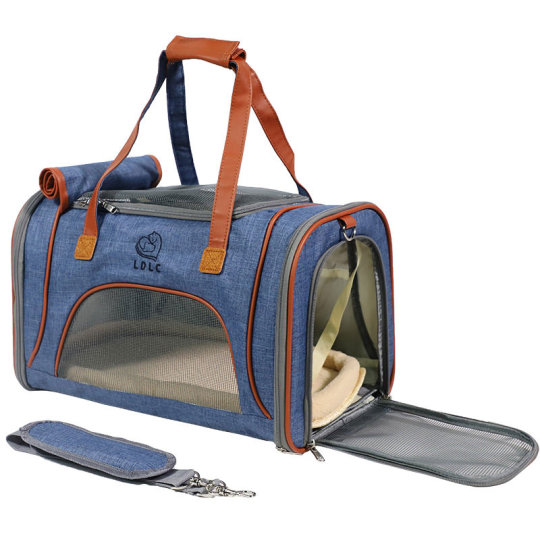If your cat has no objection to human petting, it is possible to tell by its posture. If it does not flinch, you can gently stroke its tail end from bottom to top, but remember not to raise your hand, but lower it, because raising your hand will make the funny cat think you are going to hit it. Remember not to touch the cat's head first to avoid being scratched and bitten. The ideal time to try to pet your cat for the first time is when it is eating. Remember to move very slowly. And if it suddenly stops eating or backs up, remove your hand and try again another day.

When your cat has gotten used to you caressing it, it's time to bring it home. First, lure it to the door with food and let it walk to the door by itself.
Some cats, especially those with previous psychological shadows, may have a psychological barrier that they will never be able to cross. Such a cat is impossible to completely tame. With this kind of cat, you may only be able to keep a certain distance from it as a friend. If you bring such a cat home, then be sure to give it enough space. This kind of cat will in time also remove its defenses or find its safe area in the house, and in this area, it will be happy to play with you. But it is also possible that they will never want to get close to you.
Cat traps can be used. These cages are also available online, or you can borrow one from an animal rescue shelter. Put a tasty treat in the cage, such as canned cat food, and let the cat go in by itself and the cage will close automatically. You can also use a cage or box with a spring door so that you can easily close the door when the cat gets in. But don't use mesh pockets or pockets or anything like that, or you will scare the cat. Here we recommend teddykala’s cat backpack, which can help you bring your cat to your home.
Talk to the cat first, or learn to purr at it to attract its attention, then put the food into the "trap" you have prepared and slowly retreat a few steps. Remember to sit or crouch down, because if you stand, the cat will feel threatened.
Place a towel or blanket in your trap cage and wait ten to fifteen minutes for the cat to calm down. This way when you move the cage, it will be less scared.
Create a safe space in your home for your cat. Ideally, this area should be large enough for the cat to come and go freely around you, so you cannot lock the cat in the toilet. In addition, this area should be relatively quiet and not generally visited by anyone else but you.
It is better to leave a room for your cat than to prepare a hiding place for it. And if your cat hides from time to time, then remember not to bother it when it hides. Because when a cat hides, it is at its most vulnerable and would not have wanted to be found. You can pretend you don't see them and come out yourself when the cat feels better.
Taming a cat indoors is the same as outdoors. Bring it food one at a time, then squat down or sit on the floor and let the cat approach on its own.
Make the cat a part of the home.
Take your cat for vaccinations, (if needed) spaying and neutering, etc. as early as possible. If you already have a cat at home, you should do this before you bring your cat home, such as taking your cat for a physical examination to check to see if it carries some common pet viruses, such as toxoplasmosis.
If your cat is still warier, you may need to set aside a special room for it at first, where it will be by itself throughout the day. You can enter the room regularly to feed her and stay next to her while she eats. You can approach it more than once until it allows you to pet it.
Feral cats like to hide, but this has always put them in a situation where they seem to be rounded up again, which in turn will make the cat warier. So it is best to leave a hiding place for your cat at the beginning. The ideal place should be a place where there is enough space to "escape" so that it is easier to escape from the hiding place if it wants to.
Play is very important in the interaction with your cat. You can make your fishing rod and hang the toy, or you can use a small laser flashlight to interact with the cat, which helps to build a relationship. Some feral cats are particularly playful at first, while others take time.
When you feel your cat is familiar with the environment and mentally ready, you can try to pick it up. The correct way is to place one hand under the cat's tail and the other under the cat's front legs, then hold the cat to your chest and let it lean on your shoulder as if you were holding a baby. Remember to move slowly. If your cat is not ready, it will duck away. Many feral cats have been known to not let people hold them either.



